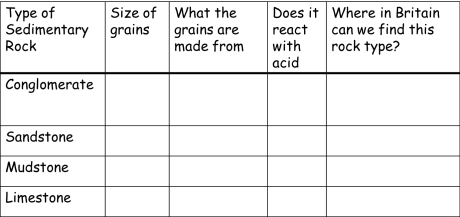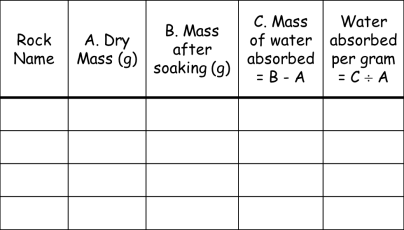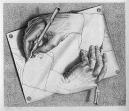Lesson Objectives – by the end of this lesson you will understand how:
- water and sunshine can break rocks apart.
- plant roots can break rocks apart.
- rocks are carried and broken by moving water.
Weathering.
Weathering is the word given to the breaking and changing of rocks by natural processes. We learned about one of those processes in Part IV, acid rain. Today we are going to learn about other types of weathering:
Task 1.



This is a personal research task, also a writing or drawing task.
Below is some information, and resources (videos and web-pages) about different types of weathering.
1.1 Read the information below, then either:
a) Write a description of what happens in each type of weathering in your book, this could be under headings, or as a table.
OR
b) draw a poster with pictures/cartoons which describe the 4 types of weathering.
There are 4 main types in all, they are:
1. Onion-skin weathering.

onion-skin weathering
This is where changes in temperature (hot during the day and cold at night), cause the rock to crack and break off in layers. This is common in countries where it is very hot during the day and very cold at night, such as desert countries.
Can you guess from the picture why it’s called “onion-skin” weathering?
2. Freeze-Thaw Weathering.

cracked rock from freeze-thaw
This is more common in the UK, where we don’t have that much heat during the day, but we do have lots of rain and it often gets cold enough for water to freeze. When water freezes it expands. If there is a crack in a rock full of water, then the freezing water will make that crack bigger. Then it thaws out and fills with water again, before freezing and making the crack bigger. This process continues until the rock breaks in half.
You can find out more about freeze-thaw weathering on this video, this video, or on the BBC bitesize website.
3. Acid Rain Weathering.

Acid Rain wore away this statue on Bath Abbey
In the last lesson you tested rocks for weather chemical weathering by acid rain affected them, so you know now how acid rain effects some types of rocks, and buildings and statues made of those types of rocks.
You can read more about acid rain on BBC Bitesize
4. Biological Weathering.

A Tree Growing in a Rock
Biological weathering is where rocks are slowly broken apart by growing trees and other plants. The roots, in searching for moisture grow into cracks and as the roots grow the cracks get bigger. You may have seen this for yourself on a small scale, where paving slabs on the pavement or on patios are moved and broken by growing trees and plants. There are some impressive pictures of biological weathering here.
Erosion, Abrasion and Transportation.
Watch this video which shows the connection between weathering and erosion by rivers and glaciers.
Small pieces of rock can be transported by wind, glaciers and rivers.
Task 2

Abrasion of rocks by water, wind and ice, causes rocks to become smooth and rounded as they bounce into one another. Take a look at your pet rock
2.1 Is your pet rock round and smooth, or jagged and pointy?
2.2. Do you think that your pet rock has been moved by water, wind or ice?
Task 3.



A thinking, discussion and writing task.
Dr Wilkinson has set up a model river, in small groups take a look at the model river, and the pieces of rocks being moved and transported.
3.1 – Observe where the water is moving fastest, what size rocks can be found there?
3.2 – Observe where the water is moving slowest, what size rocks can be found there?
3.3 – Which rock size is moved the furthest along the model river?
3.4 – How far do you think your pet rock could have been moved? How far could your rock have moved if there was a really big river? Or a glacier?









































